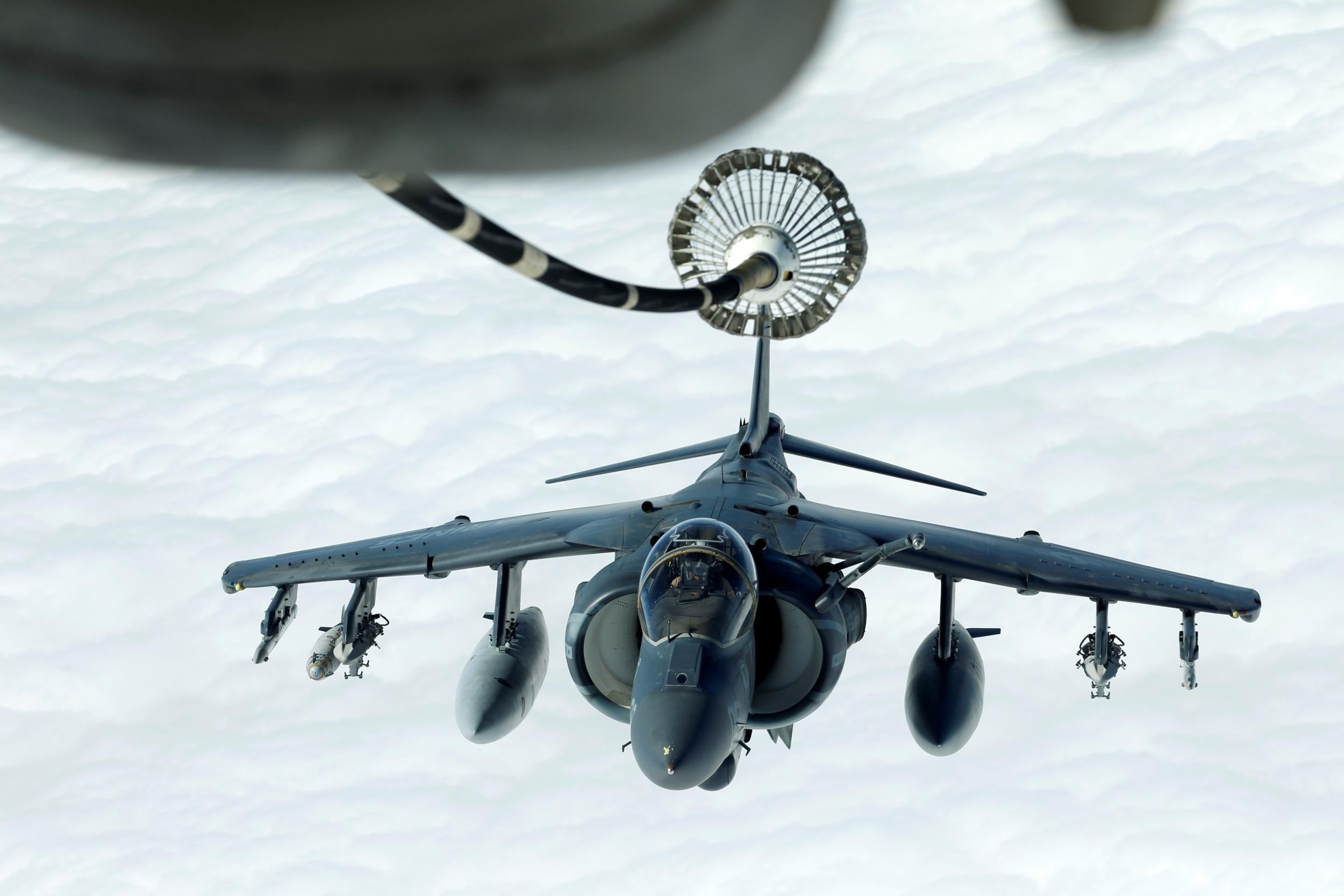While Trump ignites chaos among Sunni Arab nations, the US coalition just bombed pro-Assad forces on the ground in Syria
Syrian government-allied militia threatens retaliation after two direct US strikes and downing of drone as tensions grow over control of southern Syria’s border with Iraq

Donald Trump’s first trip abroad as President of the United States last month took him to Saudi Arabia, where he gave a speech about the importance of global unity in combating terrorism, sold arms to regional powers, took part in a ceremonial sword dance, and along with a few other world leaders, grasped a glowing orb.
In his remarks in Riyadh the president made repeated attacks on Iran, which he singled out as a state sponsor of terrorism. (In response to the Isis attacks in Tehran on Wednesday, the White House reiterated that "states that sponsor terrorism risk falling victim to the evil they promote," ignoring the fact that the militants are Sunni rather than Shia extremists.)
Mr Trump’s open criticism of the Gulf states’ traditional enemy is widely viewed by many as part of the reason the Saudis were emboldened to make an example of tiny maverick neighbour Qatar this week, leading the charge as several Arab states cut off all ties with the kingdom.
The unprecedented spat could have manifold consequences across the region - not least for its many conflicts, as economic and political alliances shift.
The fallout could have a particularly important effect on the course of the six-year -old Syrian civil war.
Yet on the ground in Syria, in the last two weeks, US forces are also changing the status quo directly, with two direct attacks on pro-regime militia forces which entered the deconfliction zone around Al Tanf, near the Iraqi and Jordanian borders in the south of the country. On Thursday, the US confirmed it had also shot down a pro-regime drone after it fired at coalition forces. Pro-Iranian Hezbollah media channels claimed the drone to be Iranian.
US-led bombing also destroyed two artillery pieces, an anti-aircraft weapon and damaged a tank in a strike on June 8, Central Command, the wing of the US military which oversees its operations in Syria and Iraq, said in a statement.
Tuesday’s strike follows a similar incident in the same area on 18 May, in which US-led forces destroyed pro-regime units which had made “significant advances” into the deconfliction zone.
It is not clear whether the two strikes caused any casualties.
Mr Trump ordered a retaliatory air strike on a Syrian airbase near Homs to dissuade President Bashar al-Assad from using chemical weapons following the 4 April atrocity in Khan Sheikhoun, which was the first direct military intervention by the US in Syria since the war began.
The strikes at Al Tanf, however, mark a significant escalation of tensions between Washington and Damascus and its allies over control of Syria's southeastern border with Iraq.
The area is strategically crucial for Assad's military partners in Tehran, who hope it could open a 'Shiite Crescent' of Iranian influence from the country across Iraq, Syria and Lebanon.
The US maintains a base in the same region which is where it trains Syrian rebels to fight against Isis.
The Syrian government-allied troops had been warned multiple times not to advance inside the de-confliction zone, Central Command said.
“The Coalition does not seek to fight Syrian regime or pro-regime forces but remains ready to defend themselves if pro-regime forces refuse to vacate the de-confliction zone.
“The Coalition calls on all parties in southern Syria to focus their efforts on the defeat of Isis, which is our common enemy and the greatest threat to regional and worldwide peace and security,” it said.
A statement from an alliance of pro-Assad militias issued via Hezbollah on Wednesday, however, threatened to hit US positions in Syria in retaliation, warning Washington their “self-restraint” would end if US forces again crossed “red lines”.
“America knows well that the blood of the sons of Syria, the Syrian Arab Army, and its allies is not cheap, and the capacity to strike their positions in Syria, and their surroundings, is available when circumstances will it,” the statement said.
It was not clear from the release whether Russia, Assad's most powerful ally, was a signatory.
Speaking in Baghdad, a US envoy said the United States was in regular touch with Moscow and used the de-confliction hotline established between the two countries to avoid possible clashes.
Tuesday’s attack reportedly occurred after the coalition gave the go-ahead for four unarmed pro-government trucks to enter the de-confliction zone to evacuate troops wounded in an attack by Isis.
The later entry of the larger armed force led to the hostilities, Central Command said.
Join our commenting forum
Join thought-provoking conversations, follow other Independent readers and see their replies
Comments